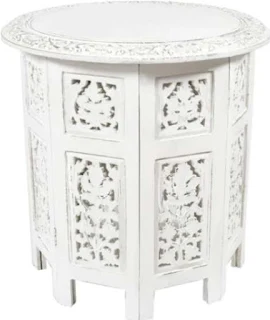The European farmhouse kitchen is a blend of rustic charm and modern functionality. Characterized by its warm, inviting atmosphere and practical design, this kitchen style has become increasingly popular among homeowners seeking a balance between traditional aesthetics and contemporary conveniences.
In this guide, we will explore the key elements that define a European farmhouse kitchen, from the choice of materials and color schemes to the layout and accessories. By the end of this article, you will have a thorough understanding of how to create an European farmhouse kitchen that not only looks stunning but also meets your practical needs.
Essential Elements of a European Farmhouse Kitchen
1. Timeless Materials and Finishes
One of the defining features of a European farmhouse kitchen is the use of natural materials. Wood, stone, and metal are commonly used to create a look that is both timeless and durable.
- Wood: Opt for reclaimed wood or distressed finishes to add character and warmth. Oak, pine, and walnut are popular choices for cabinetry and flooring.
- Stone: Natural stone countertops, such as granite or marble, provide a sturdy and elegant surface for meal preparation.
- Metal: Incorporate wrought iron or brushed nickel fixtures and hardware to add a touch of industrial flair.
2. Neutral and Earthy Color Palettes
The color scheme in a European farmhouse kitchen typically includes neutral and earthy tones. These colors create a calm and inviting atmosphere that is perfect for a kitchen setting.
- White: Classic and clean, white is a staple in farmhouse kitchens. Use it for walls, cabinetry, and even appliances to create a bright and airy space.
- Beige and Gray: These colors work well as a backdrop and can be paired with white for a cohesive look.
- Earth Tones: Shades of brown, green, and terracotta add warmth and complement the natural materials used throughout the kitchen.
3. Functional and Cozy Layout
An European farmhouse kitchen is designed to be functional and cozy. The layout should facilitate easy movement and access to essential areas such as the sink, stove, and refrigerator.
- Open Plan: An open-plan layout with a central island or a large farmhouse table encourages social interaction and makes the kitchen the heart of the home.
- Efficient Work Triangle: Ensure the sink, stove, and refrigerator are positioned to form an efficient work triangle, minimizing the distance you need to move while cooking.
- Storage Solutions: Ample storage is crucial in a farmhouse kitchen. Consider open shelving, deep drawers, and pantry cabinets to keep everything organized and within reach.
Incorporating Traditional and Modern Elements
1. Vintage and Antique Accents
Incorporate vintage and antique accents to add authenticity and charm to your European farmhouse kitchen.
- Furniture: Choose pieces like a reclaimed wood dining table or an antique sideboard to serve as focal points.
- Accessories: Vintage kitchenware, such as copper pots, ceramic pitchers, and enamelware, add character and are often functional as well.
2. Modern Appliances with a Rustic Touch
Blend modern appliances with rustic elements to create a kitchen that is both stylish and practical.
- Stainless Steel Appliances: Opt for appliances with a brushed finish to avoid a too-modern look.
- Integrated Appliances: Hide modern appliances behind cabinet fronts to maintain the rustic aesthetic.
- Farmhouse Sink: A deep, apron-front sink made of fireclay or cast iron is a must-have in a European farmhouse kitchen.
3. Lighting and Fixtures
Proper lighting is essential in any kitchen. In a European farmhouse kitchen, lighting fixtures can also serve as decorative elements.
- Pendant Lights: Hang pendant lights with metal or glass shades over the kitchen island or dining table for focused lighting.
- Chandeliers: A wrought iron or distressed wood chandelier adds a touch of elegance and rustic charm.
- Under-Cabinet Lighting: Install under-cabinet lighting to illuminate work surfaces and add ambiance.
Decor and Personal Touches
1. Textiles and Soft Furnishings
Soft furnishings play a crucial role in creating a cozy and inviting European farmhouse kitchen.
- Curtains and Blinds: Choose linen or cotton curtains in neutral colors or subtle patterns. Roman blinds are also a great option for a clean look.
- Rugs and Mats: Place a patterned rug or a braided mat in front of the sink or under the dining table to add warmth and texture.
2. Greenery and Floral Arrangements
Incorporate greenery and floral arrangements to bring a touch of nature indoors.
- Potted Herbs: Keep potted herbs like basil, thyme, and rosemary on the windowsill or countertop for easy access while cooking.
- Fresh Flowers: Display fresh flowers in vases or pitchers to brighten up the space and add a pop of color.
3. Personal and Family Heirlooms
Display personal and family heirlooms to make your kitchen feel truly unique and personalized.
- Photographs and Artwork: Hang family photographs or vintage artwork on the walls to add a personal touch.
- Collections: Showcase collections of antique dishes, glassware, or cookbooks on open shelves or in glass-front cabinets.
Conclusion
Creating a European farmhouse kitchen is about blending traditional charm with modern functionality. By incorporating natural materials, neutral color palettes, and a mix of vintage and modern elements, you can design a kitchen that is both beautiful and practical. Remember to add personal touches and consider the layout to ensure your kitchen is a welcoming and efficient space.


